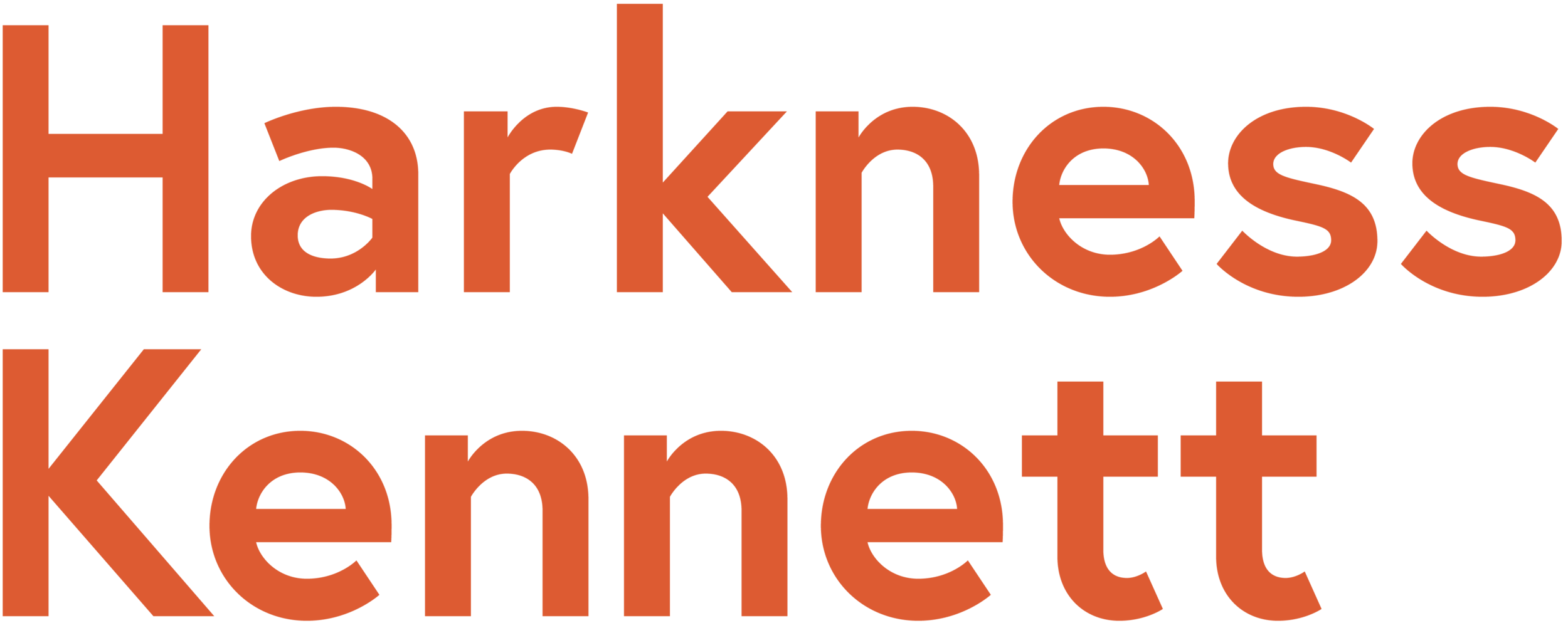Why the key to successful change lies with line managers
It’s not new news that front line managers are key to successful internal communication, particularly during periods of change, but the challenges of implementing effective line management communication is something that many organisations still struggle with.
I’ve recently had the opportunity to do a bit of research around the topic, looking at academic studies, and it occurs to me that there are two major obstacles for organisations wishing to use front line managers as a primary communication channel:
Resistance from senior leaders who are looking to control the message and are sceptical around the skillset of line managers
Lack of focus from IC teams (often unintentional) on supporting line managers, as they themselves struggle to balance the workload of shaping and delivering messages across key channels
This isn’t meant to be an academic paper (although I have listed at the end some background reading if you’re interested!), but if you’re looking to reinvigorate the approach to line management comms in your organisation, here are some interesting snippets which may just add some fuel to your fire:
Change theory, and how it works in practice
There are several different change models worth familiarising yourself with – including Kotter’s 8 step approach, McKinsey’s 7-S Change Management Model, the ADKAR Change Management Model, Kubler-Ross Five Stage Change Management Model and Lewin’s 3-step model. Whilst line managers are considered as key influencers during change, very little is known about how they interact with employees while implementing change.
There are two types of change theories: programmatic (or planned) change and emergent change.
With programmatic change, the change is ‘set out’ in advance by senior leaders and communicated to employees in terms of desired changes and outcomes. With this kind of change there is a view that communication needs to create a compelling reason for change and potentially overcome resistance to it by persuading people of what’s required.
Emergent change on the other hand is described as unpredictable, often unintentional, and can come from anywhere, involving relatively informal self-organising. This kind of change assumes every employee is an individual agent making their own decisions based on the information they’re receiving and the connections they are making. Wholesale change emerges as a critical mass builds up behind a certain way of doing things (think adoption of the internet/email).
In reality, often change happens in both these ways at the same time, and front-line managers have an important role to play. Consider that whilst leaders are ‘front of stage’ (putting plans in place, creating organisation, control and structure, and the comms team is creating a clear story of where we are going, whey we are going there and how we will get there) ‘behind the scenes’ as it were, the change is actually emergent; messy, unpredictable, shifting and can appear chaotic! Here, communication plays a key role in enabling dialogue, helping people to connect and make sense of what’s going on, freeing up information flows.
So, why are line managers so important?
OK – so there’s a ton of evidence showing that employees prefer to hear things from their line manager more than anyone else.
According to McKinsey, 2008, only 30% of business leaders agree that the change programmes they have been involved in have been completely successful. Take a moment to think about that. Just 30%!
In 2006, Larkin & Larkin produced a report showing that poor communication contributes to the high failure rates in delivering change. They give three main reasons for this failure. Companies, they say:
1. Communicate too late
2. Don’t understand what each channel does best
3. Avoid talking about outcomes
They cite two separate studies which clearly show the majority of employees (69% and 57% in each study) prefer face to face communication for important information and during change. Further studies showed that only 5% of employees preferred important information to be communicated in written form, and 8% recommended it as the best channel for building support for change. They went on to show that 90% of large companies use employee publications to communicate major change. There’s only one appropriate response to this – and that is ‘Why??’
Next, consider this: Larkin & Larkin go on to demonstrate that formality ruins communication – for everyone. Formality comes from communication that is too public (ie townhalls) or too permanent (ie written or recorded) and what employees at all levels want most is conversation. Using Hay Group Key Driver Analysis they showed that employees are nine times more likely to support change if they hear it from their manager as opposed to reading it in a publication, and four times more likely than if they hear if face to face from a senior manager.
Mitigating the risks
OK, so we’re all human, and if you put communication in the hands of multiple managers you’re increasing the risk of changed messages and nuances being missed. But you should not let this put you off. There’s some research by Kumah et al which shows the following as critical skills for line managers in their role in delivering change:
Effective communication and listening skills
Coaching and networking skills
Problem solving
Leadership and line management skills
Technical competencies
Ability to secure stakeholder commitment
Ability to schedule work
Capacity to cope with change
They go on to argue that it is the obligation of senior leaders to create conditions that enable the success of line managers by ensuring they have access to information, support and the resources needed to achieve change. And this is where comms pros come in. We should be prioritising the enablement of line managers over our town halls, sharepoint articles and newsletters.
There is a really interesting article by Wioceshyn et al (see below) that is worth a read if you have a spare moment. It looks in detail at the change facilitating activities and interactions between frontline managers and staff (especially professional staff) and the causes of success or failure. It demonstrates that change is better implemented where managers have invoked shared values and joint implementation through early joint planning, collaborative implementation activities and staged implementation (allowing fine tuning). Allowing staff to talk through how small changes would lead to better outcomes in line with their professional values was a key driver for successful change.
How should the IC pro support change implementation?
It occurs to me that the best thing IC pros can do is to be advocates for the importance of the role of line managers in communication; enabling a robust cascade process fit for both BAU and change is crucial.
When change projects rollout, the priority should be to focus more on line manager communication and less on the SLT, glossy publications and townhalls. Focus more on conversation – for which line managers are key. Obviously there may well be a need for a bit of up front leadership positioning, depending on the change, but then it should be over to the line managers. Based on our recent work with clients, here are our top tips on how we can best serve our line manager communities during change:
Focus on the continuous development of communication and listening skills of line managers as a priority, so that when change hits – they’re ready
Allow managers time to absorb information, ask questions and receive the support they need in advance of working with their teams (remember the change curve – it affects managers too!)
Provide clear messaging and support materials which can be tailored by line managers for their teams – and actively encourage them to do so
Create a communication framework and timelines, a roadmap with built in flexibility to allow for local nuances – and share with line managers
Create feedback mechanisms and support channels for line manages so they can get the information and support they need
Good luck! Take a look at the reading list below for more information, and if you need support in enabling your line managers get in touch to hear more about our bespoke training, strategy and measurement services.
Reading List:
Kumah E., Ankomah S., AntwiF (2016) ‘The Role of First Line Managers in Healthcare Change Management: A Ghanaian Context’ International Journal of BioSciences, Healthcare Technology and Management, Volume 6, Issue 3, Pages 20-33
Larkin & Larkin (2006) ‘Communicating Big Change Using Small Communication’ Inc: Hay Group, Key Driver Analysis © published in: Esler, David R.: “Communication Measurement—An Oxymoron Bites the Dust,” Strategic Communication Management, no. 2, February/March 1997, p. 11-34; Rogen International and Goldhaber Research Associates: “E-mail and Face-toFace in Workplace Communication,” April 2001, available at www.rogenint.com.; Sussman, Lyle; Arthur J. Adams; Frank E. Kuzmits; Louis E. Raho: “Organizational Politics: Tactics, Channels, and Hierarchical Roles,” Journal of Business Ethics, vol. 40, no. 4, 2002, p. 313-329.
McKinsey (2008) ‘The irrational side of change management’ McKinsey Quarterly, https://www.mckinsey.com/business-functions/people-and-organizational-performance/our-insights/the-irrational-side-of-change-management
Woiceshyn et al (2019) ‘Microdynamics of Implementing Planned Change of Orgnisations’ Front Line’ Journal of Change Management 2020. Inc: Bartunek et al. (2011); Sonenshein & Dholakia (2012); Herold et al (2007)
Published by Nicky
































